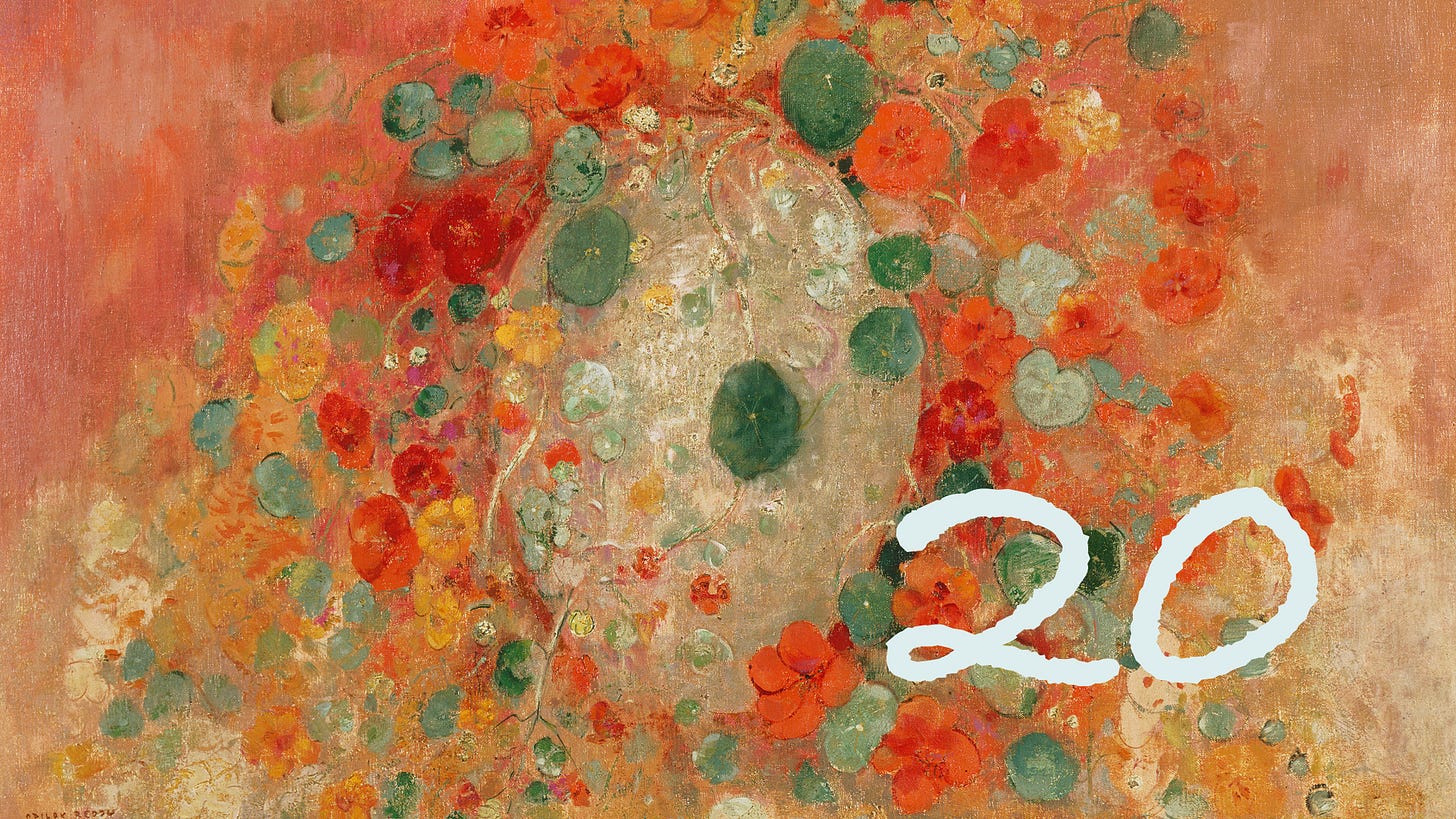Or maybe it was more like the development of a delight muscle. Something that implied that the more you study delight, the more delight there was to study. ~Ross Gay
Creativity Prompt #20: A Note of Appreciation | 30-Day Creativity Challenge
Nasturtiums (1905) by Odilon Redon. Original from the Yale University Art Gallery.
In yesterday’s prompt, we worked with image and intuition, emulating the work of the brilliant writer Brenda Miller. Today, we’re going to very specifically explore insight as a crucial facet of creativity. And our exploration will be hinged on a new scientific tidbit I learned about how the brain actually comes to those insightful “aha” moments—you know the moments of which I speak, where “suddenly” you see and know the answer to the Wordle or the solution to the Ikea furniture mishap or the ending for the essay that’s been eluding you for weeks or months (or years).
Here's an excerpt from an article by Steven Kotler about a region of the brain called the anterior cingulate cortex (ACC) and its relationship to insight:
At the turn of the 21st century, Northwestern neuroscientist Mark Beeman and Drexel University cognitive psychologist John Kounios shed light on this subject. They gave people a series of remote association problems—aka insight problems—and then used EEG and fMRI to monitor their brains as they tried to solve them.
Remote association problems are word puzzles. Subjects are given three words—for example, pine/crab/sauce—and asked to do one thing: Find a fourth word that complements all of them. (In this case, the answer is “apple,” as in: pineapple, crab apple, and applesauce.)
Some people solve this problem logically, by simply testing one word after another. Others come at it via insight, meaning that the right answer simply pops into mind. A handful of folks blend both strategies.
What Beeman and Kounios uncovered was a noticeable shift in brain function that occurred. Right before people viewed a problem that they’d eventually solve with insight, there was heightened activity in their brain’s anterior cingulate cortex (ACC). The ACC plays a role in salience and executive attention, and it’s the part that handles error correction by detecting conflicting signals in the brain.
What does this mean for us—those of us who just want to feel more creative and insightful, and perhaps have that spill over onto the page when we’re trying to write? Should we just do a bunch of those word association exercises? Actually, I’m cooking up some ideas on how to use that concept as a constrained writing prompt! More on that later (though feel free to play around with it yourself for now!). Meanwhile, I still want to understand why the ACC is so useful for fostering insight, and how to lean into that.
And it starts with underscoring this notable bit from Kotler’s explanation, which is that when your ACC handles error correction by detecting those “conflicting signals,” it also picks up on novel or alternative solutions for problem, because those “conflicting signals” sometimes represent just that: novel solutions. It works like this, according to Konois:
The brain can’t use two different strategies at the same time,” says Kounois. “Some are strongly activated, because they’re the most obvious. And some are weak and only remotely associated to the problem—odd thoughts, longshot ideas. These ideas are the creative ones. When the ACC is activated, it can detect these non-obvious, weakly activated ideas and signal the brain to switch attention to them. That’s an aha moment.
What Beeman and Kounios discovered, ultimately, is that the ACC lights up when we’re “considering off-the-wall ideas.”
So, now with a slightly better understanding of the link between the ACC and insight, how do we engage the ACC? How do we increase our capacity to actively assist the ACC in its important insight-related functioning? That’s what today’s creativity prompt is all about, including the one most important way you can support your ACC function and several strategies to increase your odds, plus a simple but powerful writing exercise you can execute in one of two ways (simpler vs more complex) in support of ACC activity and, hopefully, better insight.



